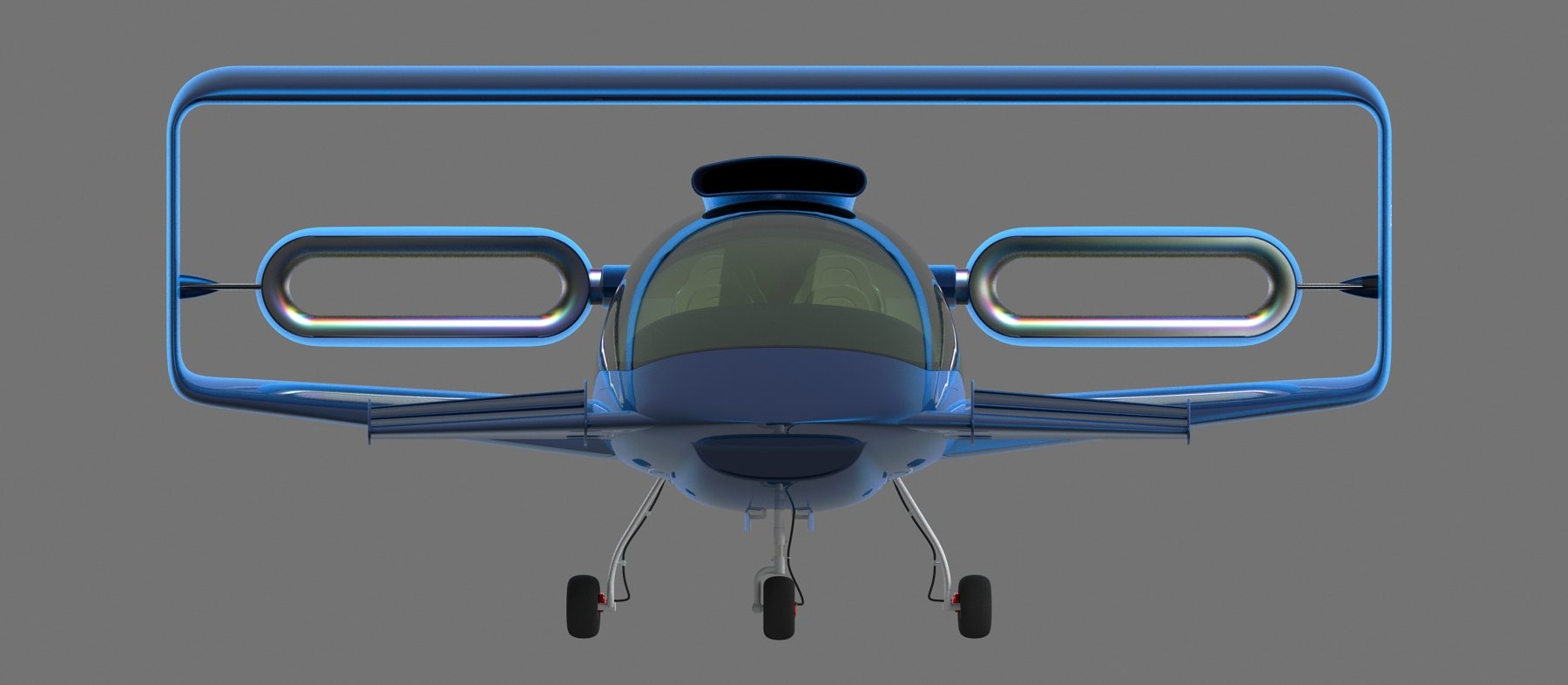Jetoptera believes the moment has arrived for its patented Fluidic Propulsion System (FPS) as an alternative to existing multi-rotor and/or propeller-driven electric and hybrid-electric propulsion systems for new eVTOL and eSTOL aircraft designs. Having worked on the technology since 2015, the U.S.-based start-up says its current technology demonstrator will be able to power aircraft with a maximum takeoff weight of up to 10,000 pounds, and potentially more.
The FPS is based on a turbine that powers a turbo-compressor with the thrust output being augmented by thrusters. On its eye-catching aircraft demonstrator, Jetoptera has integrated these thrusters into a box-wing design combined with a canard, which it has tested in a wind tunnel, and has also used FPS for powered flight on a glider.
Apart from augmenting the available thrust, the company is also promising an industry first: according to cofounder and chief technology officer Andrei Evulet, the FPS will produce at least 25 to 30 decibels less noise than the current quietest rotors and/or propellers.
Jetoptera recently put what it claims is an exceptional noise signature to the test, commissioning aero acoustics expert Robert Dougherty to use his Functional Beamforming for Aeroacoustic Source Distributions approach and an acoustic camera to provide an objective assessment.
“We found that the system had no tones at all, unlike [rotors, propellers, turbofan or turboprop] blades running at low and high frequency, and there were no peaks audible to humans,” Evulet told FutureFlight. “A tone has the characteristic of pitch, similar to musical notes. That tonal blade chopping the air up can be heard in the sea of broadband wind noise because the human ear excels at picking up tones.
"FPS, however, resembles noise similar to the broadband nature of wind noise, at multiple different frequencies but lacking the character of pitch. In places like New York, Los Angeles, and London, our aircraft wouldn’t be heard until it was about 200 feet away.”
Evulet—who was formerly an engineer with GE Aviation working on large turbofan programs like the GE9X developed for Boeing’s 777-9 long-haul airliner—established Jetoptera in his garage back in 2015, along with then-CEO Denis Dancanet and CFO Simina Farcasiu. He has since been joined by former Collins Aerospace executive Todd Newton as vice president of business development.
As it works to attract investment to advance its own plans for an aircraft, the Jetoptera team has generated revenues with U.S. military research and development contracts from agencies such as the Army Aerial Delivery Directorate. It has been a subcontractor to Paragrine Systems, LLC, which is working on powered parafoils for unmanned cargo delivery missions.
The FPS technology is based on the Coandă effect, discovered by Romanian engineer Henri Coandă around 1910. Jetoptera has already tested its concept canard plus boxed wing airframe with subscale pusher propeller models, and with electric ducted fans and turbojets, as well as using the FPS to power a glider in flight.
“Lift augmentation results from the blown-wing architecture, Evulet explained. “A lot of the performance comes from the improved low-pressure suction from the front of the FPS placed on top of the wing, the boundary layer ingestion, and the increased stall margin.”
Jetoptera, which says it holds 18 patents already, believes it could have a 4,000-pound prototype of its aircraft flying by 2024 or 2025, with a 350-pound drone version by 2022. Jetoptera is also open to proposals for converting multiple existing aircraft, such as the Cessna 182 piston single, for which it says the FPS would provide more efficient fuel consumption and speeds, with recuperated turbines.
According to Newton, current batteries are barely sufficient to support short flights for eVTOL aircraft, and the technology is unsustainable until battery energy densities drastically improve. In Jetoptera’s view, its approach to distributed propulsion can deliver more power, efficiency, and safety now and is adaptable to multiple aircraft architectures. The company claims it is far quieter and safer than any alternative and better positioned for public acceptance.
